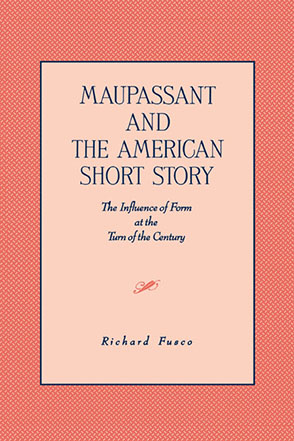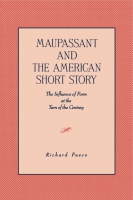
Maupassant and the American Short Story
The Influence of Form at the Turn of the Century
Richard Fusco
Maupassant and the American Short Story
The Influence of Form at the Turn of the Century
Richard Fusco
Maupassant and the American Short Story isolates and develops more fully than any previous study the impact of Maupassant's work on the writing of Ambrose Bierce, O. Henry, Kate Chopin, and Henry James. It introduces a new perspective to assess their canons, reviving the importance of many often-ignored stories and, in the cases of Maupassant and O. Henry, reasserting the necessity of studying such writers to understand the history of the genre.
- Description
- Bio
- Subjects
An important moment in the history of the short story occurred with the American misreading of Maupassant's use of story structure. At the turn of the century, writers such as Bierce and O. Henry seized upon the surprise-inversion form because Maupassant's translators promoted him as championing it. Only a few writers, such as James and Chopin, both of whom read Maupassant in French, appreciated his deft handling of form more fully. Their vision and the impact of Maupassant upon their fiction was largely ignored by later generations of writers who preferred to associate Maupassant and O. Henry with the "trick ending" story. This book details the origins and consequences of this misperception.
The book further contributes to the study of the short-story genre. Through an adaptation of Aristotelian concepts, Richard Fusco proposes an original approach to short-story structure, defining and developing seven categories of textual formulas: linear, ironic coda, surprise-inversion, loop, descending helical, contrast, and sinusoidal. As a practitioner of all these forms, Maupassant established his mastery of the genre. By studying his use of form, the book asserts a major reason for his pivotal importance in the historical development of the short story.
Richard Fusco has taught English at St. Joseph's University in Philadelphia.
Mailing List
Subscribe to our mailing list and be notified about new titles, journals and catalogs.



